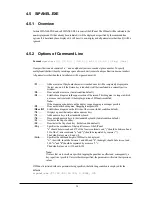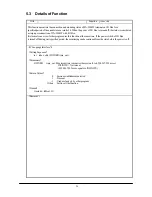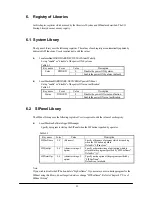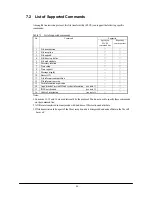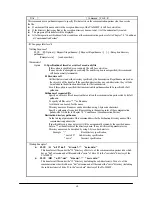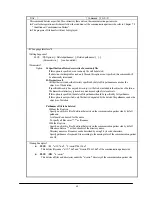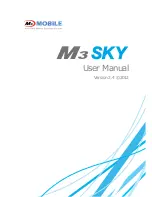
47
7.6 Communication Commands
Operational specifications for the FLCE should be made by initiating an appropriate command together with
the following arguments. A maximum of twenty commands can be described at one time, and they will be
processed sequentially in the order in which they are described. If a command encounters an error,
communication is immediately terminated from the error and subsequent commands will no longer be
processed. When the communication environment setup command is not specified, the default value is used.
Table 7.2 Types of Arguments
Type
Function
Command
Applicable Option
Example of Input
Setup
command
Communication
environment setup
/Y={device, baud
rate, mode}
None
/Y={COM1, 115200, }
File transmission
/ S
O, R
/ SOR
File reception
/ R
O, R
/ ROR
File transmission
(append)
/ A
None
/ A
File deletion
/ D
O, R
/ D
File move
/ N
None
/ N
Time transmission
/ T
None
/ T
Operation
command
Idle startup
None
Script file name
Options
O (Overwrite) :
Specification of forced overwrite of a read-only file
If this option is specified, even a read-only file will be overwritten.
If an overwrite of read-only file is attempted and this option is not specified, this command will be
abnormally terminated. The attribute of source file will be duplicated onto a target file which has been
overwritten.
R (Recursive call):
All files that exist under a specified directory are used as the objective of processing. If the specified
directory has any sub-directories, the files in these sub-directories are also included as the objective of
processing. The hierarchical directory system has a maximum depth of sixteen levels. If this option is not
specified, only a file that is designated by its pathname will be the objective of processing.


